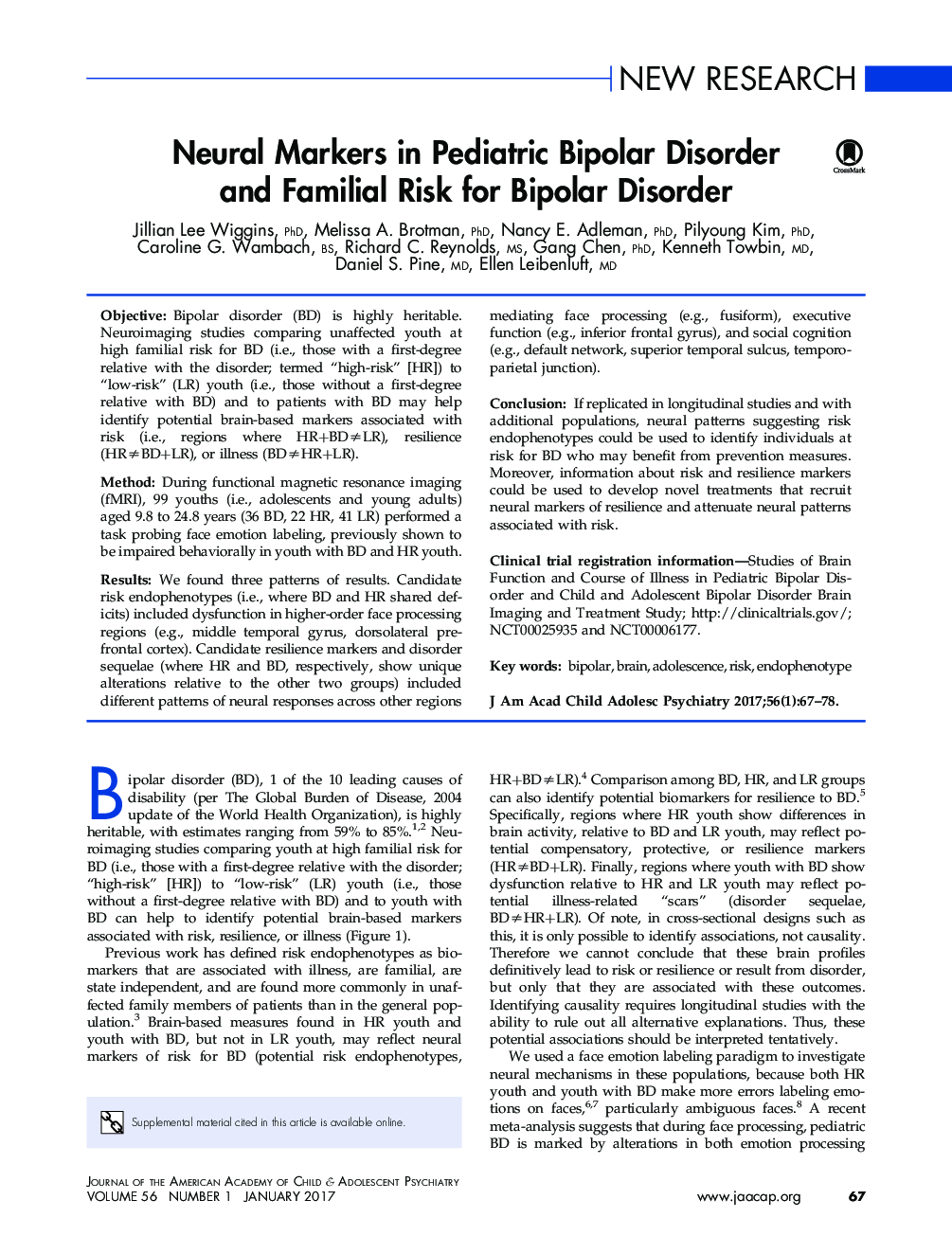| کد مقاله | کد نشریه | سال انتشار | مقاله انگلیسی | نسخه تمام متن |
|---|---|---|---|---|
| 4931596 | 1432919 | 2017 | 12 صفحه PDF | دانلود رایگان |
ObjectiveBipolar disorder (BD) is highly heritable. Neuroimaging studies comparing unaffected youth at high familial risk for BD (i.e., those with a first-degree relative with the disorder; termed “high-risk” [HR]) to “low-risk” (LR) youth (i.e., those without a first-degree relative with BD) and to patients with BD may help identify potential brain-based markers associated with risk (i.e., regions where HR+BDâ LR), resilience (HRâ BD+LR), or illness (BDâ HR+LR).MethodDuring functional magnetic resonance imaging (fMRI), 99 youths (i.e., adolescents and young adults) aged 9.8 to 24.8 years (36 BD, 22 HR, 41 LR) performed a task probing face emotion labeling, previously shown to be impaired behaviorally in youth with BD and HR youth.ResultsWe found three patterns of results. Candidate risk endophenotypes (i.e., where BD and HR shared deficits) included dysfunction in higher-order face processing regions (e.g., middle temporal gyrus, dorsolateral prefrontal cortex). Candidate resilience markers and disorder sequelae (where HR and BD, respectively, show unique alterations relative to the other two groups) included different patterns of neural responses across other regions mediating face processing (e.g., fusiform), executive function (e.g., inferior frontal gyrus), and social cognition (e.g., default network, superior temporal sulcus, temporo-parietal junction).ConclusionIf replicated in longitudinal studies and with additional populations, neural patterns suggesting risk endophenotypes could be used to identify individuals at risk for BD who may benefit from prevention measures. Moreover, information about risk and resilience markers could be used to develop novel treatments that recruit neural markers of resilience and attenuate neural patterns associated with risk.Clinical trial registration information-Studies of Brain Function and Course of Illness in Pediatric Bipolar Disorder and Child and Adolescent Bipolar Disorder Brain Imaging and Treatment Study; http://clinicaltrials.gov/; NCT00025935 and NCT00006177.
Journal: Journal of the American Academy of Child & Adolescent Psychiatry - Volume 56, Issue 1, January 2017, Pages 67-78
